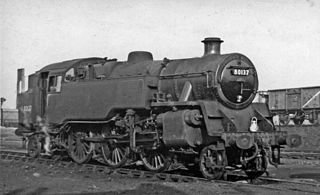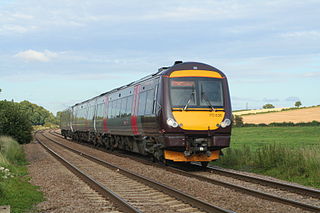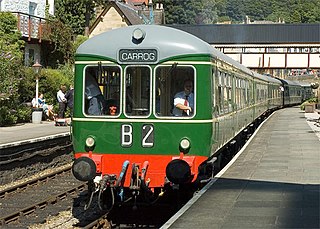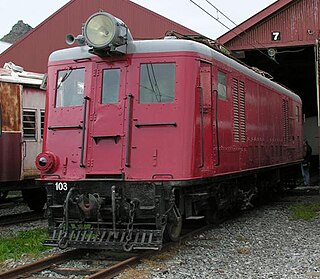
A railcar is a self-propelled railway vehicle designed to transport passengers. The term "railcar" is usually used in reference to a train consisting of a single coach, with a driver's cab at one or both ends. Some railway companies, such as the Great Western, termed such vehicles "railmotors".

A railbus is a lightweight passenger railcar with an automotive engine. It shares many aspects of its construction with a bus, typically having a bus body and four wheels on a fixed base instead of on bogies. Originally designed and developed during the 1930s, railbuses have evolved into larger dimensions with characteristics similar in appearance to a light railcar, with the terms railcar and railbus often used interchangeably. Railbuses designed for use specifically on little-used railway lines were commonly employed in countries such as Germany, Italy, France, the United Kingdom, and Sweden.

British Rail produced a variety of railbuses, both as a means of acquiring new rolling stock cheaply, and to provide economical services on lightly used lines.

The Isle of Wight Railway was a railway company on the Isle of Wight, United Kingdom; it operated 14 miles of railway line between Ryde and Ventnor. It opened the first section of line from Ryde to Sandown in 1864, later extending to Ventnor in 1866. The Ryde station was at St Johns Road, some distance from the pier where the majority of travellers arrived. A tramway operated on the pier itself, and a street-running tramway later operated from the Pier to St Johns Road. It was not until 1880 that two mainland railways companies jointly extended the railway line to the Pier Head, and IoWR trains ran through, improving the journey arrangements.

The British Railways Standard Class 4 tank is a class of steam locomotive, one of the BR standard classes built during the 1950s. They were used primarily on commuter and outer suburban services. They were capable of reaching speeds of 75 mph (121 km/h).

The Bombardier Turbostar is a family of diesel multiple unit (DMU) passenger trains that was built by ADtranz and later Bombardier Transportation at Derby Litchurch Lane Works in the United Kingdom between 1997 and 2011. The Turbostar was the first new train type to be introduced after the privatisation of British Rail. The first units were ordered by Chiltern Railways in 1996 and were designated Class 168. Since then the family has grown with the addition of the Class 170, Class 171, and the Class 172.

The British Rail Class 142 Pacer are diesel multiple-unit passenger trains built for British Rail (BR) from 1985 to 1987. They were built with a high level of commonality with the widely used Leyland National bus. They are part of the Pacer family of railbuses. The last set was withdrawn from service in 2020.

The London, Midland and Scottish Railway (LMS) Ivatt Class 2 2-6-2T is a class of light 'mixed-traffic' steam locomotive introduced in 1946.

The British Rail Class 109 is a class of 2-car diesel multiple units built in 1957 by D Wickham & Co. Five two-car units were built featuring an unusual body design. The design, first used in 1936 for South American railways, aimed to minimise weight. It had no underframe, but the whole body was formed into a welded stress-bearing box girder made of 1⁄8 inch (3.2 mm) solid drawn steel tube. Aluminium was used for panels, luggage racks, window frames, vacuum pipes and fuel and vacuum tanks. The corrugated steel floor was filled with sprayed asbestos and covered with asbestos-filled flame-proofed hardboard and rubber sheet.

The British Rail Class 143 is a diesel multiple-unit railbus, part of the Pacer family of passenger trains introduced between 1985 and 1986.

The Great Northern Railway (Ireland) (GNR(I) or GNRI) was an Irish gauge (1,600 mm (5 ft 3 in)) railway company in Ireland. It was formed in 1876 by a merger of the Irish North Western Railway (INW), Northern Railway of Ireland, and Ulster Railway. The governments of Ireland and Northern Ireland jointly nationalised the company in 1953, and the company was liquidated in 1958: assets were split on national lines between the Ulster Transport Authority and Córas Iompair Éireann.

Shippea Hill railway station is on the Breckland Line in the east of England, serving the Burnt Fen area of Cambridgeshire and Suffolk. The line runs between Cambridge in the west and Norwich in the east.

The British RailClass 141 is the first production model of the Pacer diesel multiple unit (DMU) railbus.

Southall Railway Centre is a non-publicised railway heritage centre at Southall in west London, near Southall railway station and the Grand Union Canal. Formerly of the Great Western Railway, the site is now run partly by Locomotive Services and West Coast Railways, both of whom lease the site from Network Rail. The location is not open to the public.

The NZR ED class locomotive was a type of electric locomotive used in Wellington, New Zealand. They were built by English Electric and the New Zealand Railways Department (NZR) between 1938 and 1940, and hauled mainly passenger trains on the Wellington region's 1500 V DC electrification, and banked freight trains on the steep section between Paekākāriki and Pukerua Bay.

The CPHrail motors were introduced by the New South Wales Government Railways in 1923 to provide feeder service on country branch lines.
The Witham to Maldon branch line is a closed railway line joining Maldon to the British railway network at Witham in Essex, England. It was opened in 1848 and was 5+3⁄4 miles (9 km) long. It was extended to Woodham Ferris to give direct access to Southend-on-Sea, but that extension was not commercially successful.
The Cambridge to Mildenhall railway is a closed railway between Cambridge and Mildenhall in England. It was built by the Great Eastern Railway, and opened in two stages, in 1884 and 1885.

The 'Hanover version' of the Wismar railbus was developed in the early 1930s as a light railbus for economical passenger services on branch lines in Germany.

Maldon East and Heybridge railway station served the town of Maldon and village of Heybridge in Essex, England. It was opened in 1848 by the Maldon, Witham & Braintree Railway (MWBR) on a branch line from Witham to Maldon. It was originally named Maldon but was renamed Maldon East in 1889 and then Maldon East and Heybridge in 1907.



















